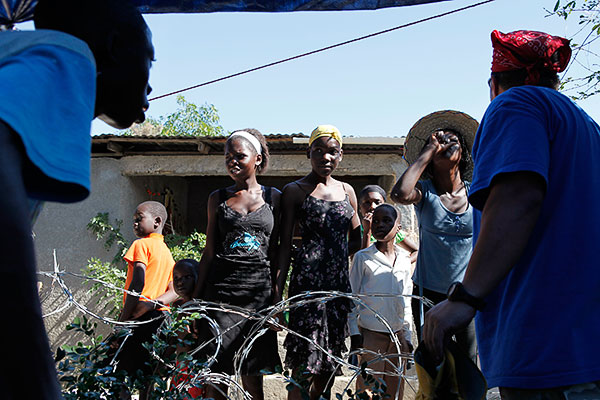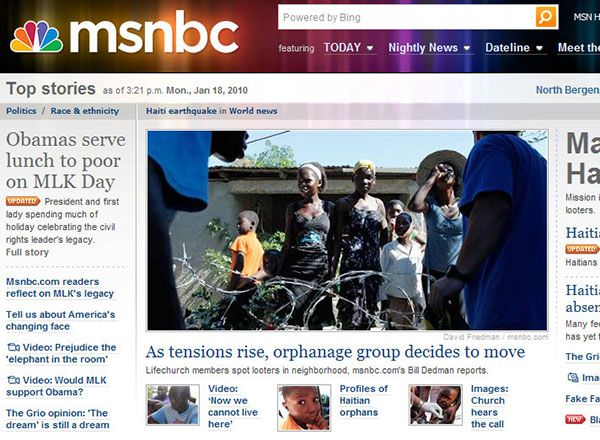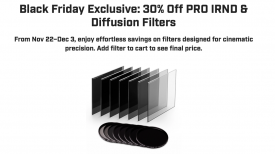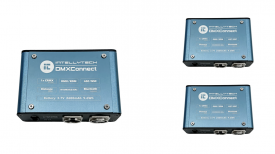By David Friedman, photojournalist & multimedia producer, msnbc.com
“The earthquake happened. Now we cannot live here. We can’t. It’s unsecure,” Ramon Crespo told the dozen Haitian orphans gathered under a tarp for a somber meeting. It was six days after the earthquake and the orphans and staff had spent those days living in a makeshift camp – in limbo – in the garden. The meeting was a pivotal moment in the tale of the orphans and the church group caring for them. It was a moment I knew I needed to shoot as video, edit, transmit and get published on our site as quickly as possible that morning.
Reporter Bill Dedman and I were embedded with members of a church group from Allentown, Penn. They headed to Port-au-Prince the day after the quake to take care of the children at the Rescue Children orphanage, which their church ran. We were staying with them and publishing daily updates on their story in blog form on news website msnbc.com.
The wrap-up piece we produced after the trip, Bill Dedman narrates.
While Bill was covering the written word, my task was to shoot and transmit both stills and video from the field daily and gather material for a comprehensive piece afterward. For the first time in my career as a multimedia producer at msnbc.com I was doing both with the same camera, a Canon 5D MkII – that’s a big deal. Trying to shoot both well on a single, developing story is always complicated, so the ability to do both with a single camera is nothing short of revolutionary.
The point in the weeklong trip when I was fully convinced of the DSLR revolution was the morning of that meeting. Mission leader Crespo told the orphans they would leave their home in two days. The church group had grown increasingly concerned for the children’s safety as the days progressed and relief had yet to reach the surrounding neighborhood. As soon as the meeting was over, I began ingesting, transcoding and editing my footage, and Bill began writing and filing a new text piece. In Avid I hurriedly threw together a natsound piece from the meeting with Crespo explaining the move to the kids, some cover shots from packing belongings, and the prayer that closed the meeting. After some minutes compressing the piece in Sorenson Squeeze down to our site video publish specs, I fired up the BGAN satellite transmitter to begin transferring the video.
Crespo tells the orphans they’re moving. Shot, edited, transmitted and published that morning.
Just after I began the BGAN upload, there was some commotion at the gate. I grabbed my camera, now somewhat stripped down into “stills” mode and went to look. A large crowd from the neighborhood had gathered to beg for food, water and electricity – supplies the orphanage couldn’t spare. I fired off a few frames while it lasted and then moved to another scene where a smaller group of woman begged for water across a barbed-wire barrier. I fired off a few more frames there before the crowd dispersed. It was a tense couple of minutes.

Bill went to send an update to the story he’d already filed, and I sat back down to quickly send a couple of the stills I’d just shot. My earlier video upload was done before I’d finished ingesting my new stills and the BGAN was still connected. I captioned, toned and sent one still from each crowd scene. While those were still transmitting, I heard across the garden that the church leaders had decided to move the kids that afternoon. They were packing up and evacuating their compound and Bill and I had to pack up and go with them. The website was leading with our coverage and we were loading into vehicles to follow the kids’ journey.

In a couple of hours a lot had transpired and I got good video and stills from a single camera. Could I have done the same work with separate video and still cameras? Of course. But the transition from one camera to the other would likely have taken me longer and I might have missed shots. Add to that the need to travel light and the Canon video DSLR revolutionizes my work. Oh yeah, the video quality is beautiful too!
Now some words about our gear and workflow. We’re an Avid shop and edit in the field on laptops running Avid. PluralEyes isn’t an option for us and we can’t afford to spend time manually syncing audio to every shot. But we’re also not willing to live with Canon AGC running roughshod over our sound. So our solution is to capture audio in the camera, with a JuicedLink box, external microphone(s) and running Magic Lantern firmware to get control over levels (plus other video niceties).
Was everything perfect with my kit in Haiti? Hardly. In full “video” mode, with a Sennheiser ME-66 shotgun mounted in the camera’s hotshoe and a Zacuto Z-Finder on the LCD, I couldn’t even get my eye to the stills viewfinder. If I wanted to quickly grab a still I couldn’t. So one thing I’ll change is adding a small Sennheiser MKE-400 mic to the kit for those times when I want to dynamically switch back and forth between stills and video. I’ll give up a bit of sound quality vs. the bigger shotgun, but I can still run it through the JuicedLink and Magic Lantern (Sennheiser makes a nifty XLR adapter for it), get my eye to the stills viewfinder and get a smaller, lighter rig. Also, our 5D MkII kits were so new when the earthquake struck I didn’t have an ND filter with me – that would have been a huge help shooting video outside down there. I have one now.
All of our blog posts are here (in reverse chronological order):
http://worldblog.msnbc.msn.com/archive/category/1402.aspx
A slideshow of stills (also reverse chronological):
http://www.msnbc.msn.com/id/34850400/from/ET/?beginSlide=1
A playlist of the video pieces I filed while down there:
http://www.msnbc.msn.com/id/21134540/vp/35100898#35100898





